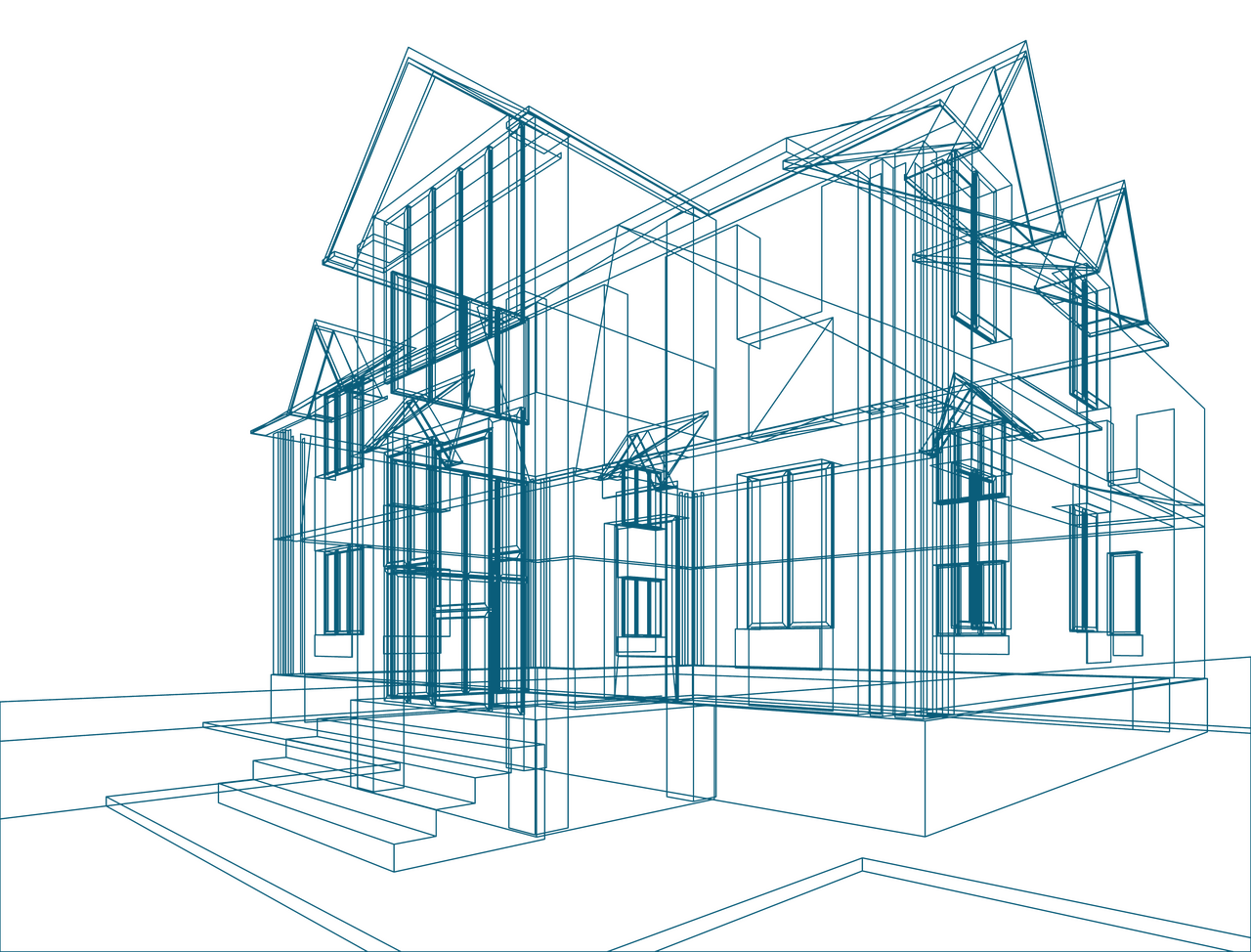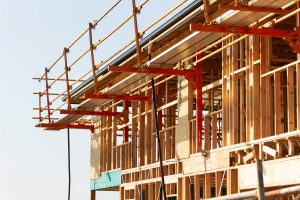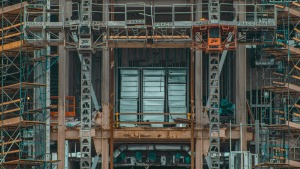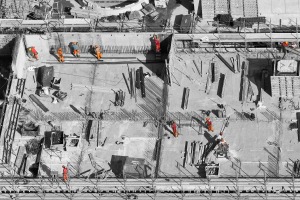


Market report
Digital shift in construction industry
Discover the latest market trends and insights for European architects with the European Architectural Barometer report. Stay informed and ahead of the curve in the architectural industry.
Blogs I published 01 October 2024 I Dirk Hoogenboom
The Importance of Digitalization in the Construction Industry
People huddled over blueprints spread across a large table, pencils in hand, pointing to different parts of the design – a classic image of the construction industry. But the hands-on, tactile approach that has driven it for so long is changing. Today, meetings take place over screens, with digital tools replacing physical drawings. Instead of erasers and rulers, we have software that adjusts designs with a few clicks. Conversations that used to require onsite solutions now happen through shared digital platforms. In other words, this is the new reality of construction – digitalization is becoming essential to how we build.
So, let’s take a closer look at what that means for construction specifically – how it’s evolving, where it’s making the biggest impact and which tools are reshaping its future.
The Digital Shift in Construction
In this sector, digitalization takes many different forms: from robotics and automation, through laser-scanning and smart wearables, to IoT or VR, there’s a lot of ground to cover and a lot of tech to keep an eye on. Most of it, however, is in very early stages of development, mostly due to construction being an overwhelmingly conservative industry and preferably sticking with what works best: pen and paper, physical site visits and manual calculations.
These methods have served the trade well, allowing projects to evolve slowly and carefully. But with the rise of digital tools, the industry is recognizing the benefits of speed, accuracy and improved collaboration.
In regards to this shift, technology that has taken center-stage is building information modeling (BIM) – a tool changing the way we plan, design and manage construction projects.
Contractors and project managers can communicate in real time, ensuring that everyone is on the same page, without the need for endless meetings or back-and-forths. For an industry that’s traditionally been a bit slow to embrace new technology, this change feels big. Yet, it is happening, and stakeholders are increasingly getting on board, so it’s an accurate benchmark for the overall speed of digitalization.


What is BIM?
BIM is a 3D digital representation of a building that serves as a collaborative platform for architects, engineers, contractors, electricians – essentially anyone involved in the project. Unlike traditional construction methods, where each sector works in isolation and merges contributions afterwards, BIM fosters collaboration through shared data and real-time updates. This digital twin accompanies the project from conception through completion and beyond, becoming an invaluable tool for the entire building lifecycle.
Rather than just depicting the layout or structure, BIM captures every aspect of the project: say, the amount of concrete or steel beams needed, timelines and workflows, budget projections, sustainability tracking, all while anticipating potential clashes.
For instance, if a contractor needs to adjust the placement of ductwork, everyone involved in the build will see the change immediately and make necessary adjustments to their plans. This eliminates last-minute surprises and improvisation, enabling teams to plan more effectively, avoid costly mistakes and improve overall efficiency. In essence, everything is part of the equation.
BIM Adoption
Despite BIM’s clear advantages, as far as full adoption goes – we’re not quite there yet. It’s more of a steady pace, and that’s okay. Like any new tool, it takes time for an entire industry to fully embrace it, so here’s the key points to keep in mind.
BIM’s Rise in Europe
When it comes to BIM adoption, architects are leading the way. Since 2009, we’ve seen a gradual and steady climb from just 10% to 45% by 2023. As we look further down the construction and installation supply chain, we notice that the adoption of BIM slows down. Right now, about 12% of contractors are on board, while installers BIM adoption follows closely at 11%. HVAC specialists BIM adoption is a bit behind, with an adoption rate of just 9%.
But with the benefits of BIM becoming clearer, there’s plenty of time to catch up. Its growth has flattened out in recent years – likely due to a dip in new construction projects across Europe – but we expect that by 2027, BIM users will reach around 60%.


Country-by-Country Differences
BIM adoption varies greatly depending on where you are. Take the Netherlands, for instance: their digitalization efforts in construction are leaps and bounds ahead of neighboring countries like Germany or Italy (a stunning 76%, as opposed to significantly lower counts of 32%).
Company Size Matters
Adoption also depends on company size. Large construction firms are jumping on the BIM bandwagon more quickly. Small to mid-sized companies, on the other hand, often find BIM a bit out of reach, either because of the cost of software or the need for specialized training.
What’s Holding BIM Back?
All this doesn’t mean BIM is fully embraced throughout the industry, and there are a few reasons preventing wider adoption, despite the obvious benefits.
Primarily Used for New Builds
One of the main reasons BIM hasn’t taken over the industry is its primary focus on new builds. Renovation projects, which often make up a significant portion of construction work, don’t always require the same level of detailed modeling. Many of these projects still rely on traditional 2D-drawings and simpler tools to get the job done.
Training and Cost Barriers
Another big challenge is the cost – specifically, cost of training. BIM is powerful, but complex, and learning how to use it effectively takes time. For smaller companies or firms with limited budgets, the upfront investment in both software and training are an tangible setback.
Knowledge Gaps
Not everyone in the industry is fully aware of how BIM can streamline processes and improve long-term outcomes. There’s still a learning curve, and some stakeholders aren’t convinced they need it. This is particularly true for smaller firms that have been successful with traditional methods and don’t feel an urgent need to change.
The Future of BIM and Digitalization
Despite these challenges, the future of BIM and digitalization in construction is clear. The adoption curve may be slow, but it’s undeniable. As the technology becomes more affordable, and as companies see the long-term benefits of BIM – especially for lifecycle management and sustainability – it will continue to grow.
Lifecycle Management
One of the most exciting aspects of BIM is its role in lifecycle management. BIM goes beyond the construction phase; it serves as a comprehensive tool for managing a building throughout its entire lifecycle. This means that from planning and design to maintenance and eventual deconstruction, BIM provides invaluable insights and data.
Sustainability
As sustainability becomes a bigger focus in the construction industry, BIM’s ability to track materials and optimize a building’s lifecycle will be crucial. Imagine being able to plan for the recycling or reuse of materials at the end of a building’s life. That’s the kind of foresight BIM offers, making it an essential component of modern sustainable building practices.
AI and BIM
Artificial Intelligence is set to take BIM to the next level. By incorporating AI into BIM models, we’ll be able to automate data analysis, enhance project planning and reduce human error. This integration could optimize everything from material usage to energy efficiency, making BIM not just a design tool but a comprehensive project manager.


Conclusion
Digitalization in construction is following an evolutionary path – slow and steady – but as BIM becomes more affordable and user-friendly, its significance will grow even further. With more projects adopting this technology, we can look forward to a future where BIM not only enhances efficiency but also supports sustainable practices in our built environment.
If you’re working in construction and haven’t explored the potential of BIM yet, now’s the time. It might feel like a big leap, but every step towards digitalization is a step towards a more efficient, sustainable future for your projects.
Take a look at our webinars and other blogs on BIM, digitalization or future trends in the construction industry. There are plenty of resources out there that can provide valuable insights and keep you informed about the latest trends in the construction industry.
Construction Consulting Services for You
We provide tailor-made market research and off-the-shelf reports, both B2B & B2C, qualitative and quantitative. Here are some you might be interested in
Monitor and improve client relationships to drive loyalty and repeat business in construction.
Map out key interactions and pain points to refine the overall construction experience.
Identify the aspects of service or product that most impact satisfaction in construction projects.

Read more

Fresh Insights Await
Our relevant reports
Delve into the newest findings across various market segments, crafted for a cutting-edge overview. Explore our insightful reports, brimming with up-to-date data, trend analyses, and in-depth examinations, all tailored to provide you with a comprehensive understanding of the current market dynamics.
Construction
Home Improvement
Installation
Special reports












